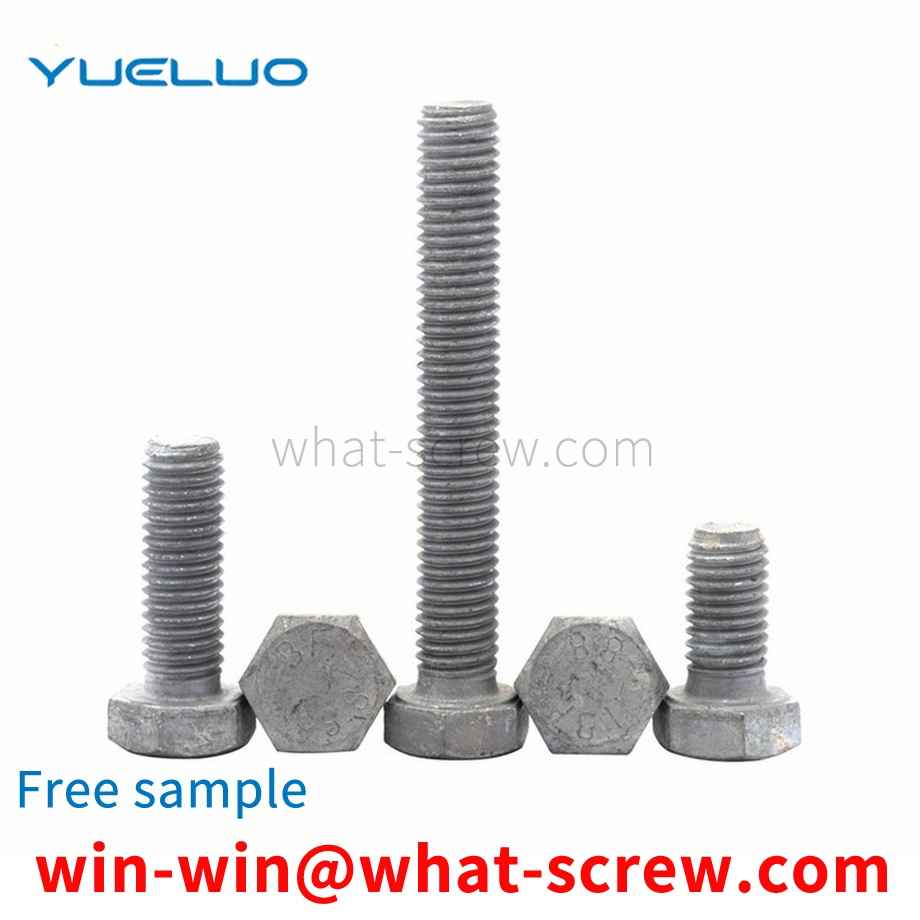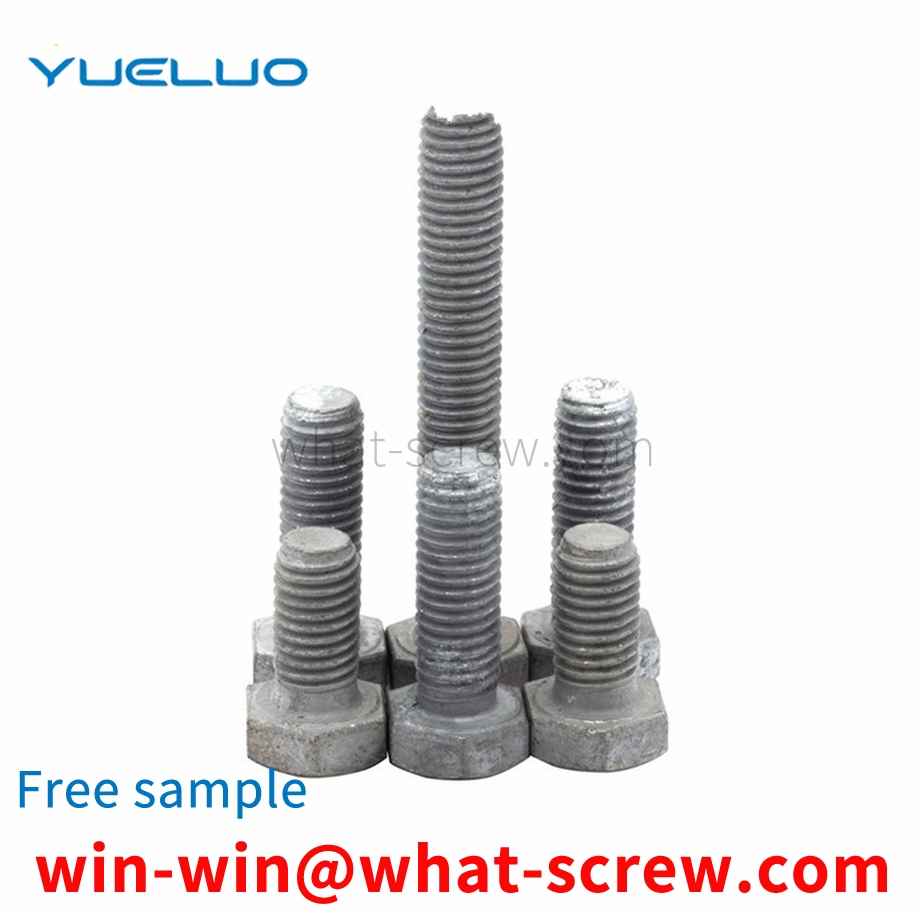The four corners of the bolt head of the traditional T-slot connection bolt are all rounded corners, which will make the contact area between the bolt and the T-slot too small and reduce the connection fastness, especially when used for connection. When aluminum or copper profiles are used, due to the low hardness of the material, it is more likely to cause deformation of the T-shaped groove and affect the connection effect. Furthermore, since the traditional T-bolt has no direction indicator, it is difficult for the installer to identify the installation state during installation.
In chemical production equipment, the cylinder body and the head cover need to be connected and sealed. The traditional sealing structure is to connect the two with a screw, add a non-metallic gasket in the middle and fix it with a nut. However, such a sealing structure only controls the tightening torque, and has the technical defect that the sealing ring will be twisted or even broken during repeated loading and unloading of the cylinder head cover, resulting in poor sealing performance.
According to the development and evolution process of self-tapping screws, we believe that the main types of self-tapping screws are as follows: 1. Common self-tapping screw threads are self-tapping threads, also known as wide thread. The surface is mostly electroplated. 2. Self-cutting and self-tapping screws are called scraping ends of self-tapping screws in my country's standard. The threads are self-tapping threads or machine threads, and the cross grooves are also H type. There are several types of self-cutting self-tapping screws: cross recessed pan head self-cutting self-tapping screws, cross recessed countersunk head self-cutting self-tapping screws. Cross recessed countersunk head self-cutting self-tapping screws, hexagon head self-cutting self-tapping screws. 3. Self-extrusion and self-tapping screws (self-tapping locking screws) The threads of self-extrusion and self-tapping screws are generally machine threads, and self-tapping threads are rarely used. In the wrenching method, in order to ensure the use of high-speed automatic assembly wrenches, slotting is generally not recommended. The cross section of the screw of the self-extrusion self-tapping screw is triangular. So it is also called triangular thread screw. 4. Self-drilling and self-tapping screws (self-drilling screws) The threads of self-drilling and self-tapping screws are self-tapping threads according to Chinese, German and international standards. In the American ASME and SAE standards, the BSD self-drilling self-tapping screws are self-tapping threads, and the CSD self-drilling self-tapping screws are machine threads. Self-drilling self-tapping screws are not recommended for slotted and normal hex head. 5. Metal driving screws (metal tapping screws) The metal driving screws have multiple threads and special threads with a certain helix angle. Only the American standard has metal drive screws, and there are no Chinese and German standards. 6. Wallboard self-tapping screws (dry wall screws) Wallboard white tapping screws are special threads with horn head, cross groove (H type) and 60° profile angle, and the surface is mostly phosphate treatment (phosphating). 7. The cross groove of the fiberboard nail is Z-shaped, and the surface treatment is mostly electroplating. There are several types of fiberboard nails: countersunk head, double countersunk head fiberboard nails, pan head, pan head flange (with pad) fiberboard nails, semi-countersunk head, semi-countersunk head flange (with cushion) fiberboard nails. 8. Combination self-tapping screws Ordinary self-tapping screws, self-cutting self-tapping screws, self-drilling self-tapping screws, etc., and flat washers, elastic washers (including spring washers, elastic locking washers, etc.). 9. Others Self-tapping screw types High and low thread double lead self-tapping screws, coarse and fine thread (different pitch) thread self-tapping screws, threads coated with sealing material (fall resistance) self-tapping screws, various composite groove self-tapping screws, Other special self-tapping screws, etc. In short, there are many types of self-tapping screws. With the development of production, the advancement of technology, new materials, new structures, and new thread forms, new self-tapping screw products will continue to appear.
The four corners of the bolt head of the traditional T-slot connection bolt are all rounded corners, which will make the contact area between the bolt and the T-slot too small and reduce the connection fastness, especially when used for connection. When aluminum or copper profiles are used, due to the low hardness of the material, it is more likely to cause deformation of the T-shaped groove and affect the connection effect. Furthermore, since the traditional T-bolt has no direction indicator, it is difficult for the installer to identify the installation state during installation.
With the rapid development of electronic technology, the integration of circuit boards is getting higher and higher, and the number of layers of circuit boards is increasing. Press-fit and fix to ensure accurate alignment during riveting and pressing. The rivets used on PCB boards are basically brass rivets. When riveting and pressing multi-layer PCB boards, metal chips are prone to appear, inner layer short circuits or foreign objects between layers, and because of the brass rivets With higher hardness and larger wall thickness, the riveted area of the PCB is thicker than the non-riveted area, which is easy to cause damage to the middle steel plate of the auxiliary tool. At the same time, the protruding rivets hinder the free expansion of the copper foil, which is easy to produce copper foil. wrinkling phenomenon. Now there are improved plastic rivets used to manufacture multi-layer PCB boards. The advantage is that no metal debris is generated, and at the same time, the tool steel plate is not damaged to the greatest extent. However, the existing plastic rivets are insufficient due to the inherent strength of plastics. When the PCB board is riveted and pressed, it is easy to deform, and the positioning is inaccurate, resulting in dislocation between layers, resulting in poor improvement of the product defect rate.
We have many years of experience in the production and sales of screws, nuts, flat washers, etc. The main products are: left-tooth reverse nut, straight-through hollow chassis motherboard, electrical nuts, solid positioning pins and other products, we can provide you with suitable fasteners for you solution.



















 Service Hotline
Service Hotline




